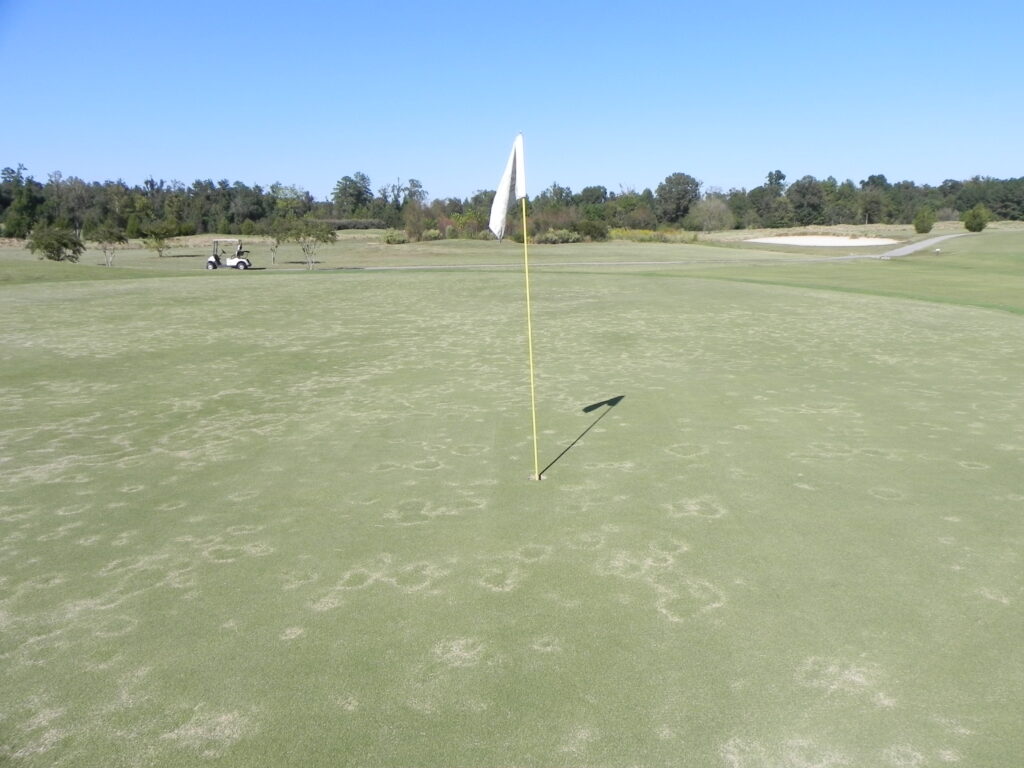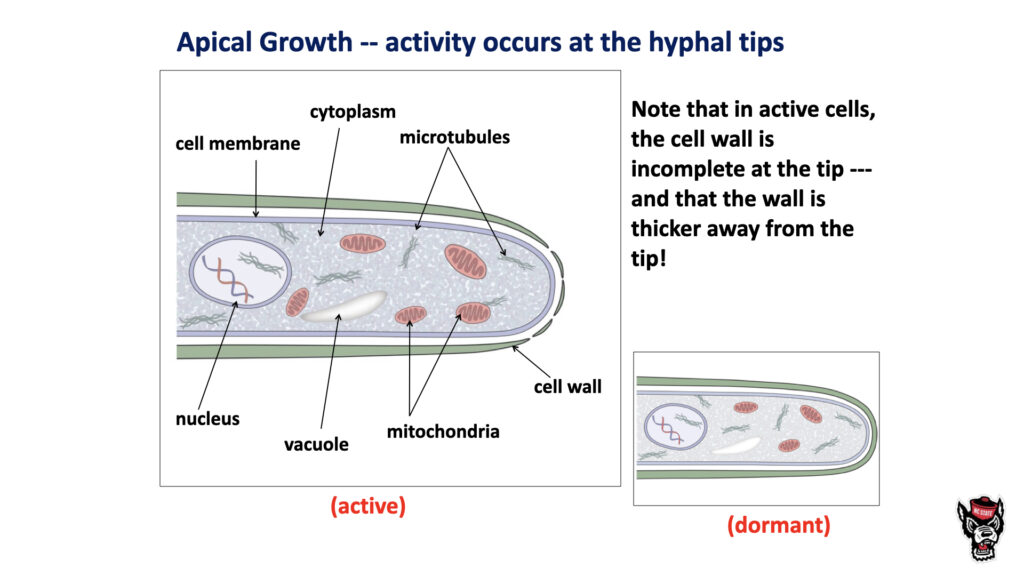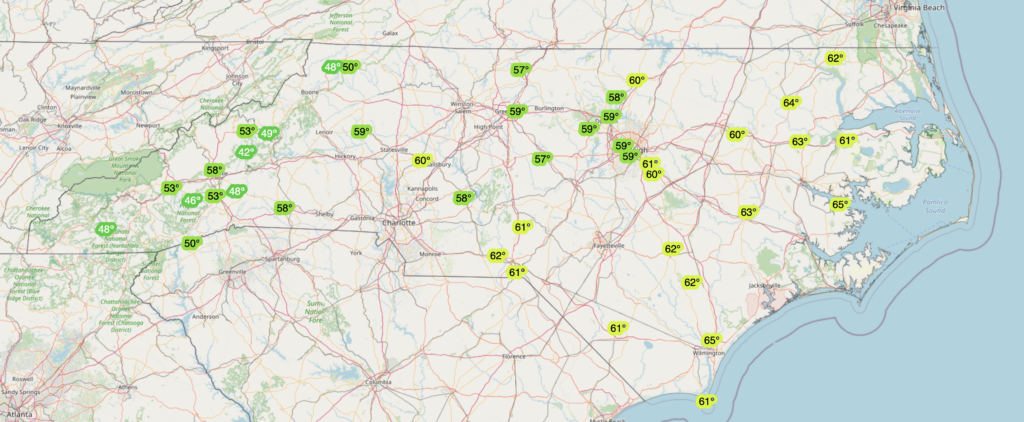Fungicides “Not Working”? – Not So Fast!
go.ncsu.edu/readext?831285
en Español / em Português
El inglés es el idioma de control de esta página. En la medida en que haya algún conflicto entre la traducción al inglés y la traducción, el inglés prevalece.
Al hacer clic en el enlace de traducción se activa un servicio de traducción gratuito para convertir la página al español. Al igual que con cualquier traducción por Internet, la conversión no es sensible al contexto y puede que no traduzca el texto en su significado original. NC State Extension no garantiza la exactitud del texto traducido. Por favor, tenga en cuenta que algunas aplicaciones y/o servicios pueden no funcionar como se espera cuando se traducen.
Português
Inglês é o idioma de controle desta página. Na medida que haja algum conflito entre o texto original em Inglês e a tradução, o Inglês prevalece.
Ao clicar no link de tradução, um serviço gratuito de tradução será ativado para converter a página para o Português. Como em qualquer tradução pela internet, a conversão não é sensivel ao contexto e pode não ocorrer a tradução para o significado orginal. O serviço de Extensão da Carolina do Norte (NC State Extension) não garante a exatidão do texto traduzido. Por favor, observe que algumas funções ou serviços podem não funcionar como esperado após a tradução.
English
English is the controlling language of this page. To the extent there is any conflict between the English text and the translation, English controls.
Clicking on the translation link activates a free translation service to convert the page to Spanish. As with any Internet translation, the conversion is not context-sensitive and may not translate the text to its original meaning. NC State Extension does not guarantee the accuracy of the translated text. Please note that some applications and/or services may not function as expected when translated.
Collapse ▲Turf diseases are a change in structure and/or function of the plant caused by the continuous irritation of a pathogen that results in the production of symptoms. This is not to remind anyone of the brutal days of memorizing definitions from Introductory Plant Pathology, but rather to reiterate that a disease is simply the plant’s reaction to infection by a pathogen, specifically for turf a fungus or fungal-like organism. Another key point from the definition above is “results in the production of symptoms”. The definition of result when used as a verb is to occur or follow as a consequence of something, so this indicates that pathogens could be active when symptoms are developing or symptoms could be a consequence of preceding pathogen activity. For diseases of bermudagrass putting greens such as take-all root rot and mini-ring pathogen activity most certainly precedes symptom development. We know that the organisms that incite take-all root rot on bermudagrass putting greens are most active when soil temperatures are between 86 and 77oF, but can grow as long as soil temperatures are above 65oF. Current soil temperatures in Raleigh are hovering around 59oF which has likely terminated growth of the take-all pathogens. The mini-ring pathogen is easily recovered from bermudagrass tissue during August and optimal temperatures for growth of this fungus is between 83 and 97oF. Yet symptoms of these diseases may not develop until bermudagrass growth is hindered due to less light and cooler temperatures in the fall and into winter. However, we constantly hear that fungicides are not working for these diseases or some even think they may have some super pathogen that doesn’t respond to any fungicides.

Late season damage from mini ring on an ultradwarf bermudagrass putting green. Symptoms will likely stick around through the winter regardless of fungicide applications at this time in addition to host plant no longer growing optimally this time of year.
Neither of these scenarios are true. Our in vitro sensitivity research, where we place the pathogens on media amended with fungicides, demonstrate that the take-all and mini-ring pathogens are extremely sensitive to fungicides. Yet there are cases even in our fungicide trials where these products don’t work, so how can that be? First, in order for a fungicide to affect fungal growth the fungus must be actively growing. Fungi have cell walls and when they are actively growing, they have an organelle that perforates the cell wall at the growing tip. Then the fungus pushes all of its cellular contents forward to grow longer. This is how fungi grow and it is also how they absorb their food. Fungi are indiscriminate eaters so if a fungicide is present, they will also absorb it and in turn fungal cells that encounter the fungicide will die. Why is this important? Right now, it is highly likely that the take-all and mini-ring pathogens are not active so slinging a ton of fungicide targeting these organisms will not be effective. I REPEAT, SLINGING A TON OF FUNGICIDE TARGETING THESE ORGANISMS WILL NOT BE EFFECTIVE RIGHT NOW! Yes, we do suggest making an application to protect the weakened tissue from secondary pathogens but expecting rapid recovery from fungicide applications now for take-all and mini-ring is wishful thinking. Unfortunately, these symptoms will remain present until bermudagrass resumes growth in the spring of year.

Fungicides only work when fungi are actively growing. (Adopted from A Practical Guide to Turfgrass Fungicides by Dr. Richard Latin)
What can I do next summer? Although bermudagrass may be fat and sassy during the summer months, remember that the take-all and mini-ring pathogens are starting the infection process. Target preventative applications when soil temperatures are consistently (4 to 5 consecutive days) around 86oF. Applications for take-all root rot should be repeated every 21 days until soil temperatures drop below 65oF. Please see the following for fungicides that have proven most effective in suppressing these diseases:
Take-All Root Rot Disease Profile
Mini-ring applications should start around July 1 and unfortunately may need to be re-applied every 14 days through September 15 especially when disease pressure is intense. Another key to mini-ring is to supplement with urea applications at 2 to 3/10th’s N/1,000 ft2. Fungicides that have proven effective for mini-ring are Densicor, Ascernity, Briskway, Banner MAXX, Velista, Insignia, Lexicon, or Navicon. The pathogens that cause take-all root rot and mini-ring primarily affect growing points on the stolons and rhizomes. Therefore, any fungicides targeting these diseases should be irrigated in immediately with 1/8” of water. If these diseases have been exceptionally challenging to manage, then evaluate if the preventative timings are accurate, determine if enough nutrition is being applied, and finally that the fungicide is getting to where the pathogen is.
Stay tuned for more information maximizing fungicide performance!



